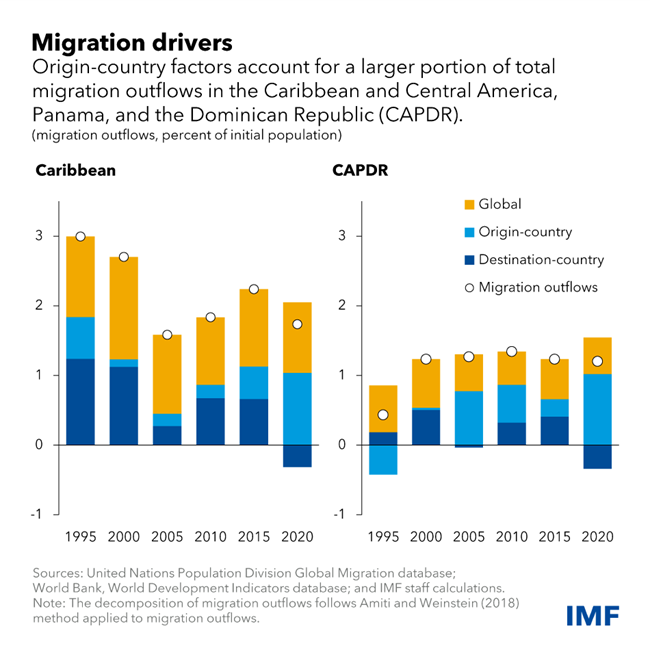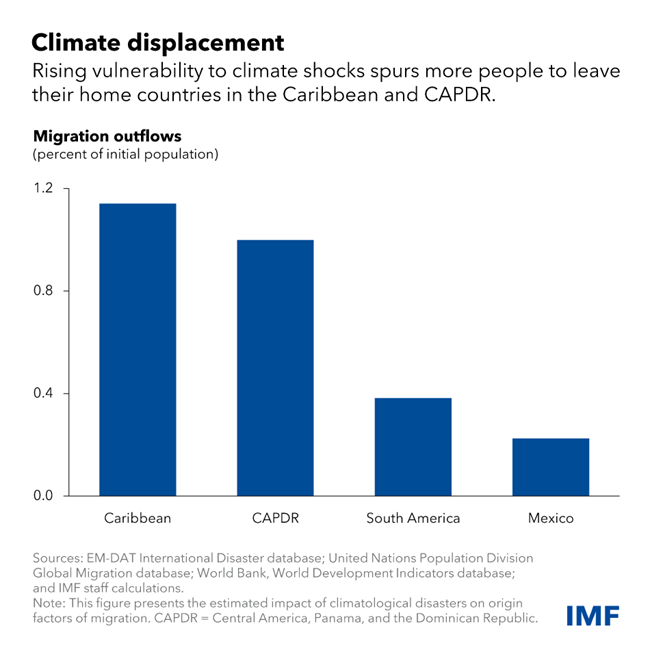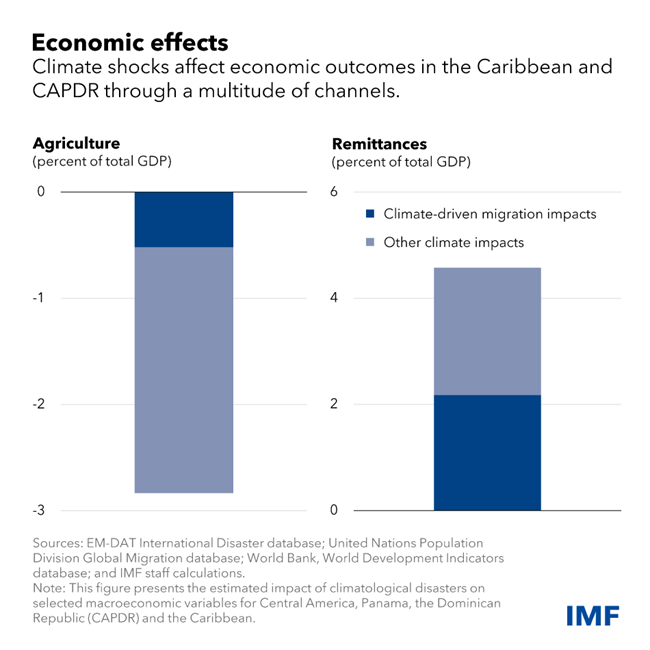How Climate Shocks Are Linked to Cross-Border Migration in Latin America and the Caribbean
December 8, 2023
Climate shocks drive more people to leave their home countries, amplifying the negative impact on the region’s economies
Cross-border migration and climate shocks have been shaping the economies of the countries in Latin America and the Caribbean (LAC) for many decades. Globally, LAC is one of the regions with the largest migrant populations—measured as a share of the population of origin country. This region is also among those most susceptible to climate events including hurricanes, storms, floods, and droughts. This climate-migration nexus is especially critical for the region’s two sub-groups of smaller economies: the Caribbean and Central America, Panama, and the Dominican Republic (CAPDR).
Our analysis sheds light on different drivers of cross-border migration, the importance of climate shocks, and impact of climate-induced migration on the economies in the region.
Drivers of migration
Migration occurs due to many factors, including difference in pay between jobs in home countries and foreign countries, migration policy, and social safety nets. Using a novel methodology, our analysis on climate and cross-border migration helps explain outward migration patterns over the past few decades.
We decomposed the drivers of migration into three groups: origin-country; destination-country; and global factors. We find that the origin-country factors have become more prominent in the LAC region, especially in the smaller economies of the Caribbean and CAPDR, making them a more important driver of total migration outflows. Among others, social safety nets may have also become more strained across the region due to rising climate shocks, thereby raising the importance of origin-country factors.

Role of climate shocks
Climate disasters significantly impact total migration through conditions in countries of origin, according to our research. In fact, three additional climate disasters annually, over a five-year period, can be associated with about a 1 percent increase in people leaving their home countries in the Caribbean and CAPDR. Comparatively, the impact in South America and Mexico is relatively smaller, ranging between ¼ and 1/3 percent.

Economic impact
Climate shocks affect the economy through many channels, including damage to physical infrastructure, lower agricultural crop yields and poorer workers’ health and productivity. However, human displacement is a critical transmission channel. For instance, our analysis finds that about 1/5 of climate’s overall impact on agricultural output in the countries in the Caribbean and CAPDR is due to climate-induced labor movement.

Climate-induced migration is also associated with higher remittances to home countries, which somewhat mitigates the adverse impact on these countries. But countries should not excessively rely on remittances, as they may not be available when needed.
The increasing frequency and impact of climate shocks calls for urgent strengthening of policy responses and programs to build resilience and mitigate the impact of climate shocks on the population, including by reinforcing social safety nets.
****
Paula Beltran is an Economist and Metodij Hadzi-Vaskov is Assistant to the Director in the Western Hemisphere Department.








